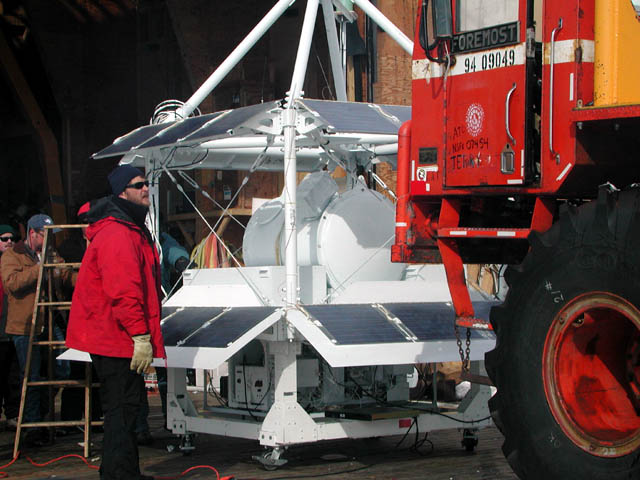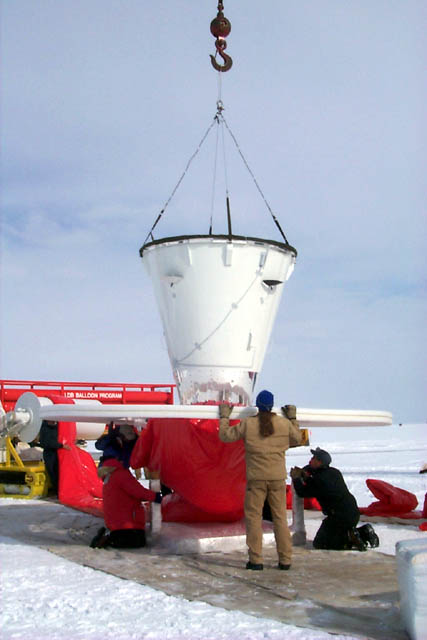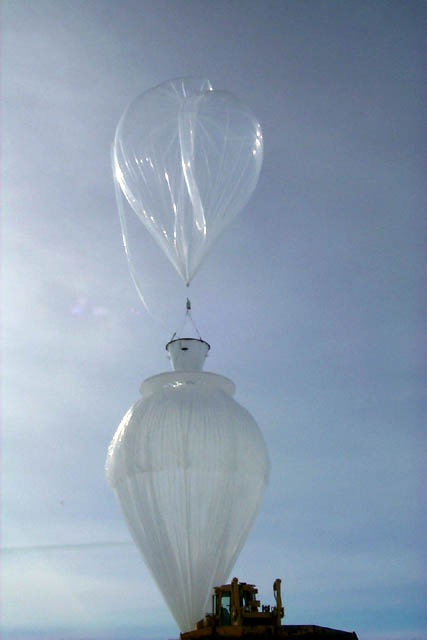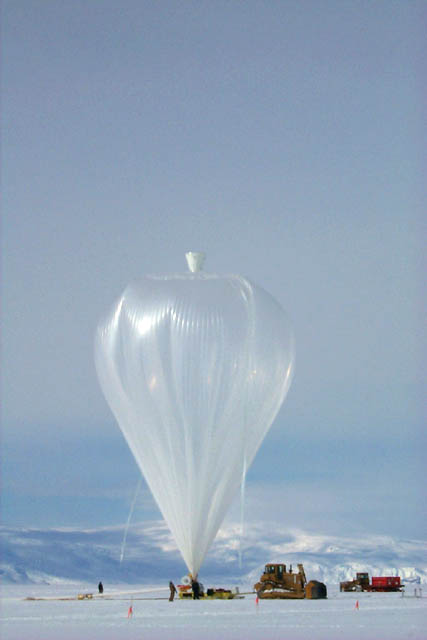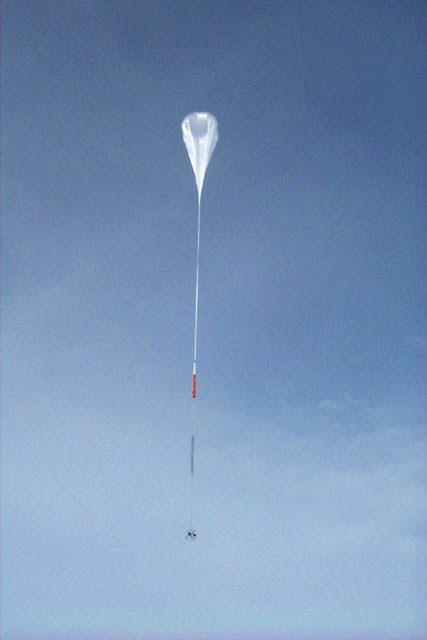Purpose of the flight and payload description
The instrument was designed to operate on the top of a high altitude balloon, hence it's name. From this location, the experiment could efficiently observe using a clean beam with extremely low contamination from the far side lobes of the instrument beam. The experiment was designed to scan a large portion of the sky directly above it and to map the anisotropy of the Cosmic Microwave Background (CMB) and thermal emission from galactic dust. The instrument used a one-meter class telescope with a five-band single pixel radiometer spanning the frequency range from 150-600 GHz. The radiometer used bolometric detectors operating at ~250mK.
Details of the balloon flight
Balloon launched on: 1/4/2001 at 7:08 utc
Launch site: Williams Field, McMurdo Station, Antarctica
Balloon launched by: National Scientific Balloon Facility (NSBF)
Balloon manufacturer/size/composition: Zero Pressure Balloon 800.000 m3 - SF3-29.47-.8/.8/.8-NA-TP
Balloon serial number: W29.47-2X-41
Flight identification number: 494N
End of flight (L for landing time, W for last contact, otherwise termination time): 1/31/2001 at 2:26 utc
Balloon flight duration (F: time at float only, otherwise total flight time in d:days / h:hours or m:minutes - ): ~ 27 d
Landing site: Bottom payload impact at 85º 5.66' S 164º 52.15' W. Balloon and telescope impact 85º 8' 54" S, 164º 26' 31" W. Antarctica
Payload weight: 2934 lbs
Overall weight: 4071 lbs
External references
- TOP HAT website NASA - Goddard Space Flight Center
- The long duration flight of the TopHat experiment Proc. of SPIE Vol. 4857
- The MSAM/TopHat Program of Anisotropy Measurements Astrophysical Letters and Communications, Vol. 32, p.273
1534If you consider this website interesting or useful, you can help me to keep it up and running with a small donation to cover the operational costs. Just the equivalent of the price of a cup of coffee helps a lot.

